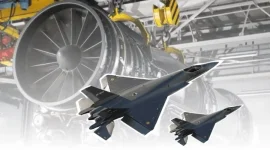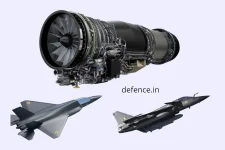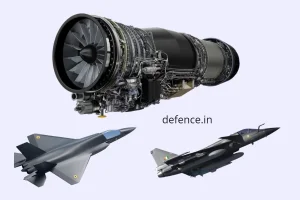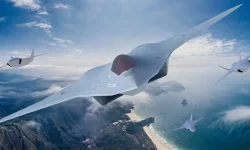- Views: 2K
- Replies: 15
South Korea's ambitious endeavor to develop indigenous jet engine technology for its KF-21 Boramae fighter jet offers valuable lessons for India.
By declaring this initiative a national mission and providing significant governmental support, including tax exemptions, South Korea aims to reduce its reliance on foreign technology and establish itself as a key player in aerospace technology.
This strategic move has been backed by a substantial investment of approximately $2.2 billion, underscoring their commitment.
India's Advanced Medium Combat Aircraft (AMCA) program, with its goal of introducing a fifth-generation stealth fighter, faces a similar challenge: developing a powerful 110kN thrust engine crucial for the AMCA Mk-2 to achieve supercruise capabilities.
While India has been exploring collaborations with international Original Equipment Manufacturers (OEMs) like General Electric, Safran, and Rolls-Royce, limitations on technology transfer have hindered progress.
Perhaps it's time for India to draw inspiration from South Korea's model and consider a more focused national mission approach for the AMCA's engine development. This would involve several key strategies:
1. Utilizing Indigenous Technology: India should leverage its existing capabilities and the experience gained from past projects like the Kaveri engine program. Even if it necessitates initially hybridizing indigenous and foreign technologies, this approach can pave the way for greater self-reliance in the long run.
2. Governmental Support and Incentives: The Indian government could designate the AMCA engine development as a national mission, providing tax incentives or exemptions to participating companies. This would reduce the financial burden of research and development and encourage greater private sector involvement.
3. Strategic Partnerships: While collaborations with foreign OEMs remain important, India should negotiate more favorable terms for technology transfer. Agreements should prioritize shared or Indian-owned intellectual property rights, ensuring long-term benefits and self-sufficiency.
4. R&D and Infrastructure Investment: Establishing a dedicated engine development complex as a national mission, focused on creating the 110kN engine, could centralize efforts and attract top talent and investment to the sector.
5. Overcoming Bureaucratic Hurdles: Streamlining bureaucratic processes, similar to South Korea's approach with the KF-21 project, is crucial for faster project timelines. This involves clearer policy directives, expedited funding approvals, and more effective integration of private sector expertise into defence projects.
By adopting a national mission approach, India could potentially overcome the challenges that have hampered its indigenous jet engine development. This would not only accelerate the AMCA program but also contribute to India's broader goal of self-reliance in critical defence technologies. It's time for India to take bold steps and establish itself as a leading force in aerospace technology.





